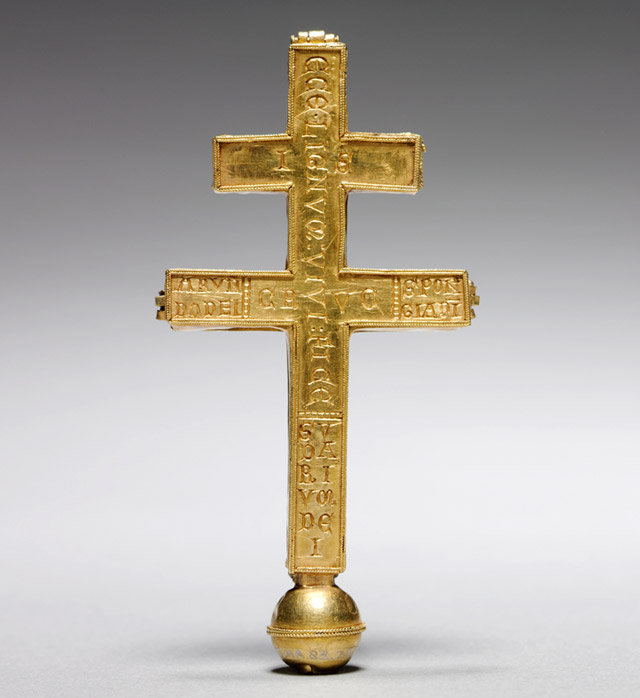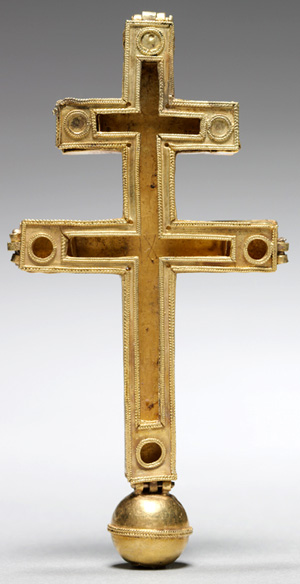Double-Arm Reliquary Cross
The Cleveland Museum of Art, purchase from the J. H. Wade Fund

 Select the image to zoom
Select the image to zoom
Mounted on a small globe and decorated on its front and back with strips of twisted wire molding, this elegant double-arm gold cross shares a number of decorative features with a group of silver crosses that can be attributed to a leading goldsmith workshop in the Latin Kingdom of Jerusalem during the twelfth century. Robbed of its relic content, the front of this cross now reveals a double-cruciform cavity in the center and three round openings at the bottom end of the vertical and the terminal ends of the larger horizontal cross arm, respectively. These cavities once contained fragments of four of the most important relics of Christ's Passion, namely, a portion of the True Cross, a piece of Christ's sudarium (the cloth that wrapped his head at the Crucifixion [John 20:6–7]), and fragments of the reed staff and sponge used by Christ's tormentors to mock him and give him vinegar for his thirst during the Crucifixion. The identity and the placement of these relics in the cross are confirmed by accompanying inscriptions on the reverse, a practice that can be observed in both East and West from the sixth century onward.
While the distribution of relics of the True Cross and other Holy Land relics is attested for the Latin kings and patriarchs of Jerusalem on various occasions during the twelfth century, the presence of relics of the Holy Sponge, reed, and sudarium is somewhat unusual, as these relics of Christ's Passion are known to have been kept among the relic treasures of the Pharos Church, located inside the imperial palace at Constantinople. If the Cleveland reliquary cross was indeed created before 1204, as art historical evidence indicates, and if its inscription and relic content were not added later, the cross's original owner must have been among the most powerful and influential figures in the Latin Kingdom of Jerusalem. Such an assumption is further supported by the artist's choice of gold as the material for this reliquary cross.





